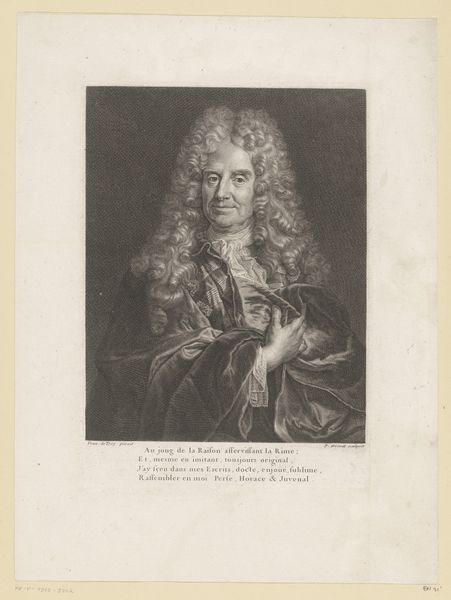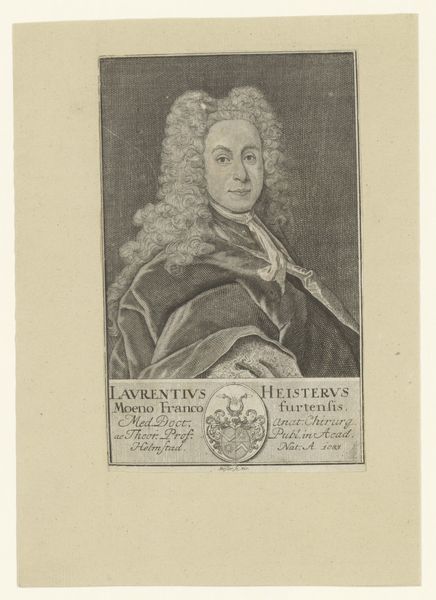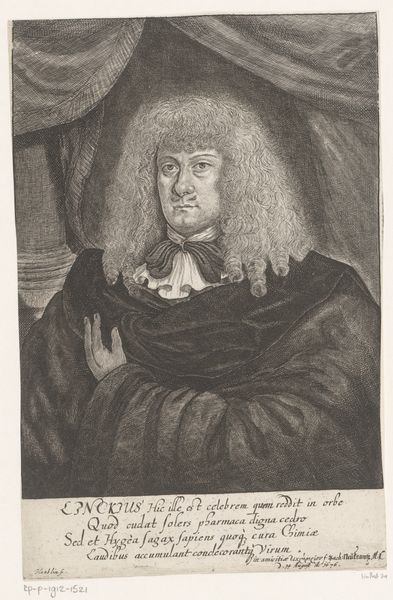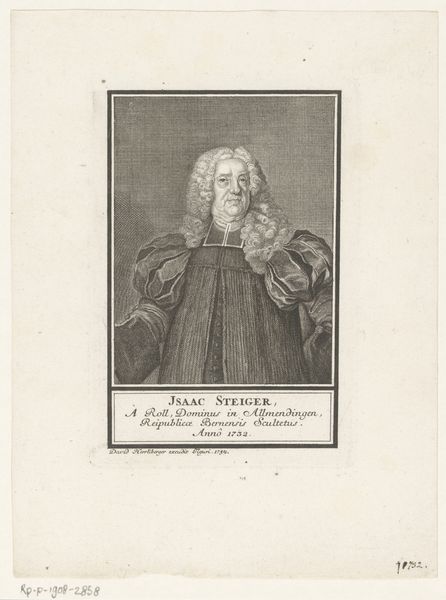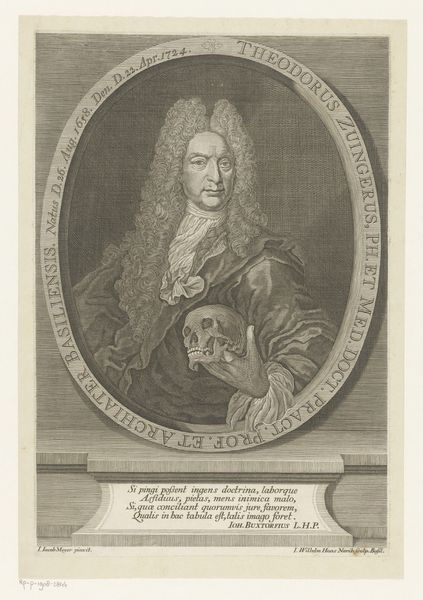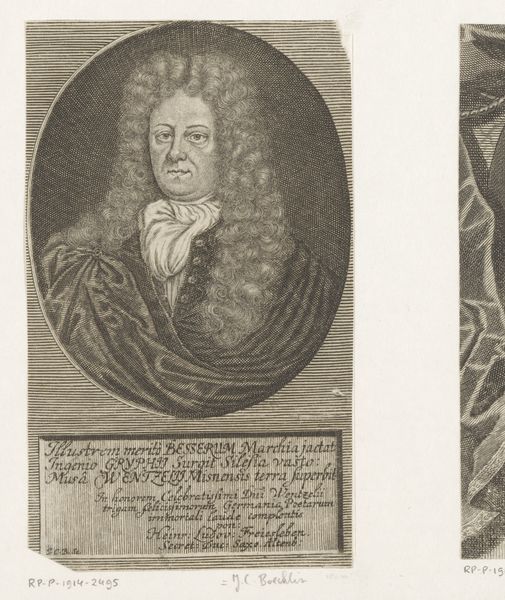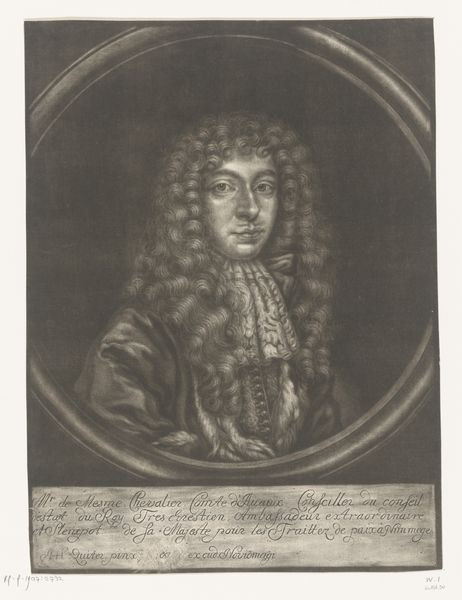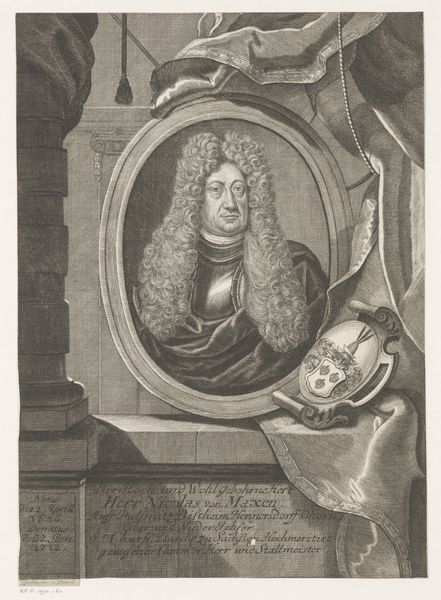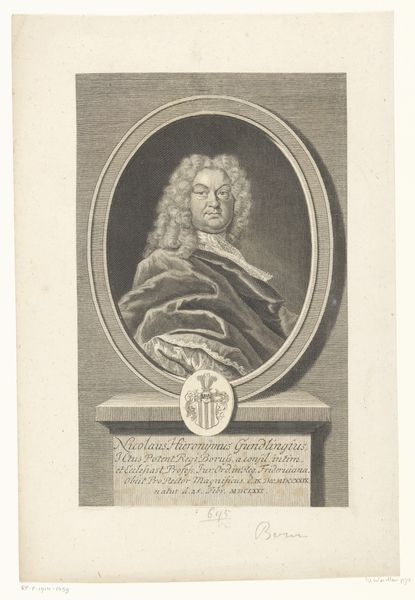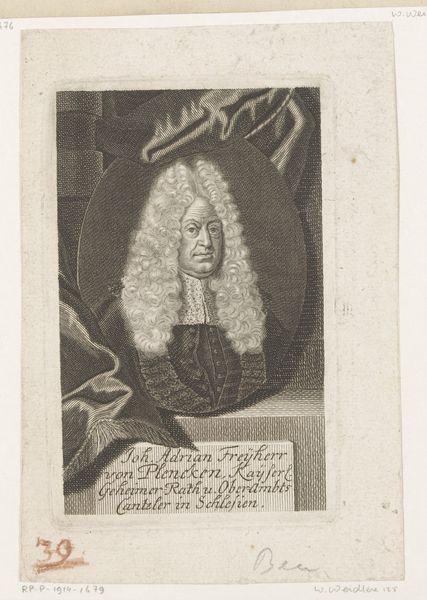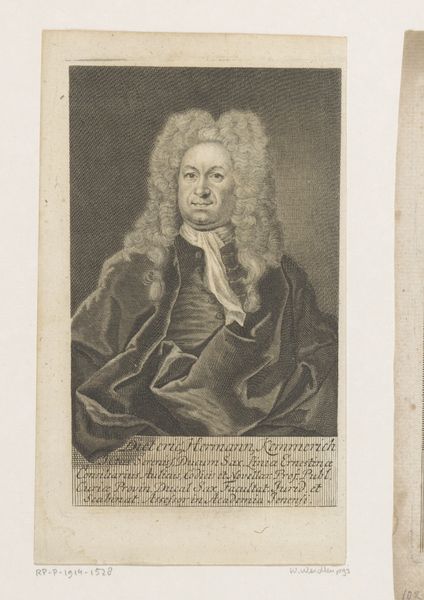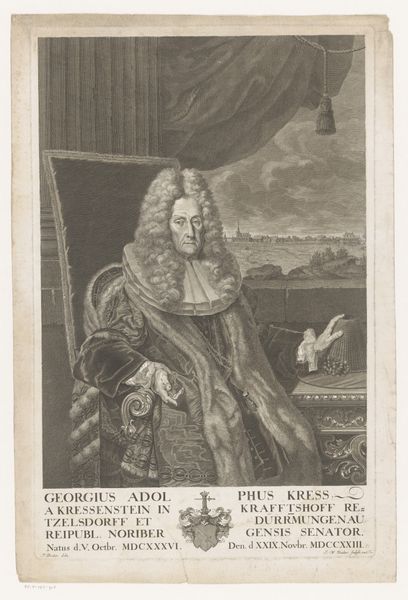
Dimensions: height 173 mm, width 134 mm
Copyright: Rijks Museum: Open Domain
This is Charles Bretherton’s etching of Jacques-Antoine Arlaud, rendered in the late 18th century. Notice Arlaud's delicate handling of the sculpture. He touches the small figure with care, a gesture echoing the Pygmalion myth, where art breathes life into the inanimate. The cherubic figure itself is a symbol of innocence and divine love, motifs stretching back to classical depictions of Cupid and continuing through the Renaissance. Consider how these images persist, subtly altered through time, yet fundamentally linked. The cherub’s innocent sensuality has roots in ancient Greece, where Eros was a powerful, often chaotic force. Over centuries, the figure softened, becoming a symbol of Christian charity and familial affection. These shifts reveal how cultural memory reshapes archetypes, reflecting evolving societal values. The cherub, therefore, is more than a decorative element; it is a palimpsest of cultural desires and anxieties, engaging us on a subconscious level. The image is not fixed but cyclical, resurfacing, evolving, and taking on new meanings in different historical contexts.
Comments
No comments
Be the first to comment and join the conversation on the ultimate creative platform.

